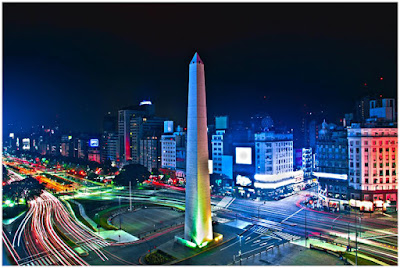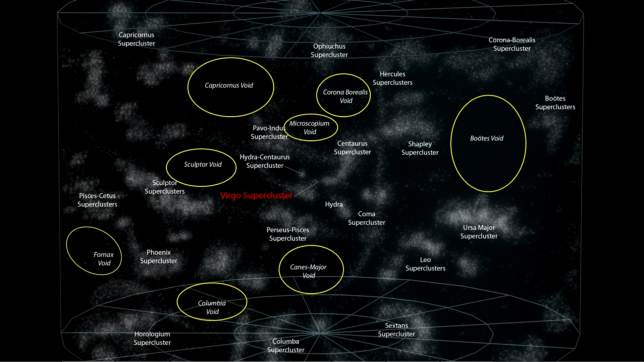The post 7 Essential Tips for Photographing Business Events and Conferences appeared first on Digital Photography School. It was authored by James Maher.

Photographing business events is a lesson in extremes. One day you might be photographing a fascinating gala with incredible lighting and a lot of alcohol and energy. Then another day, you might be forcing yourself to pay attention while capturing an insurance industry conference in a dimly lit hotel ballroom, waiting for one person to make a single joke so people will laugh or smile during a talk on offshore tax havens.
In both cases, you have to do the best job you can to come back with the best possible photography from the day. You have to be prepared for the worst lighting, awkward people, and speeches that will cause even the most focused business professionals to nod off in their chair.
Here are some tips that have allowed me to always be prepared.
1. Before the job/being professional

The more prepared you are before a job starts, the smoother the day will go, and that starts with communication.
Provide your client with quick responses to make sure you don’t get beat out by competitors. Make sure you understand all the details of the event and what will be required of you and explain everything that you will provide the client. The better the communication when photographing business events, the fewer surprises will happen during the day.
Provide an official PDF quote on branded letterhead (it’s a nice touch) and always make sure to use a contract. I know this can be stressful for those just starting, but have a standard contract created that you can easily alter for each job, and it will quickly become a simple step in the process.

Price yourself well. Do some research on event photographers in the area and value your services. Consider your expenses, travel time, shooting time, and editing time. On top of this, consider the time you spend marketing to get these jobs, your overall business expenses, and your personal expenses.
If you under-charge, you may make a little money, but you will quickly be out of business as well as hurting your competitors at the same time. Your work is valuable.
Always make sure to bring backup equipment for everything vital to the day. Bring an extra camera, lens, flash unit, batteries, and more CF cards than you need. The more prepared you are, the less will go wrong.
Finally, dress the part. This tip segways into the next topic about making people comfortable. As a photographer, people are watching you. Cameras stand out, and as much as you want to lay low to capture the best candid moments, you will be a focus of people’s attention.
Because of this, you need to make the best impression possible, While it may feel superficial, the better you dress, the more people will respect you and believe that you are doing a good job (because they often aren’t speaking to you, just seeing you working). It’s simple, but it works.
2. Make people feel comfortable

Your job as a photographer is to capture people looking happy and comfortable. The first step to doing this is making yourself look comfortable. The more comfortable and pleasant you look, the more relaxed people will feel around you, so remind yourself to keep a smile on your face.
Early on, I smile at people and give a quick hello or nod to some of the guests if the situation warrants it. If people look like they want to avoid me, I’m happy to let them. This makes me look non-threatening.
As the event goes on, people will begin to forget about you. However, the earlier you make people feel comfortable around you, the quicker this will occur.
3. Fast equipment

In my experience, a majority of business events are in places with terrible lighting, so having the right equipment is necessary. You need to have a fast lens (that goes to f/2.8 or even faster), a flash unit, and a camera that can shoot well at high ISOs of at least ISO 3200 (which most new cameras can do these days).
My main event lenses are the Canon 24-70 f2.8 and the Canon 70-200 f2.8. This will cover everything from the overall room shots, the walk-around cocktail photographs, the group shots, to the detailed speaker photographs.
If you are on a budget, a 50mm f1.8 lens is a fantastic and affordable lens for event photography. However, the prime focal length will cause some significant constraints.
For photographing business events in darker environments, I will raise my ISO to 1600 and often 3200. My camera can handle this level of ISO (and 6400 if I really need) without clients noticing and it allows me to always be able to shoot with f2.8 lenses instead of needing faster ones.

Now, even though you need to be able to shoot at f/2.8 when the lighting warrants, that doesn’t mean that I always do this. Often you will want more depth of field to show the full venue or multiple subjects sharp.
Particularly when photographing groups of people, I will always try to be around f/4 at least when it’s possible. Photographing a group at f/2.8 will often have the center person sharp while the edge subjects (or people standing too far forward) can be quite blurry.
Finally, you need a reliable flash unit. This will allow your subjects to stand out from the background and give them a pleasing light source much more flattering than your typical overhead ballroom lights. For presentations, I stay away from using a flash and instead stick to high ISOs as to not annoy a room full of people trying to concentrate.
For indoor cocktail event photography and similar, I almost always use flash.
4. Balance the room light with your flash

Whenever I need to use a flash, I will first set my camera to expose the room correctly without the flash. In my opinion, the best event photographs show the room and natural lighting of the environment while artificially lighting your subjects, so they look as good as possible.
I will raise my ISO and lower my aperture number until the room looks good, making sure that my shutter speed does not go too slow to cause too much handheld motion or motion in the subjects.
After this, I will turn my flash on and use the TTL (through the lens) setting to allow it to expose the scene correctly. TTL gives the camera the ability to read the light in the room and to give off what it believes to be the right amount of light.
While this screws up occasionally, it can be very accurate and will allow you to focus more of your attention on the event itself.
5. Bounce your flash with a diffuser

Using a flash does not mean the light that comes off of it will be automatically pleasing on your subjects. Facing it directly at the subject can be pretty harsh.
Instead, I typically aim my flash up and sometimes slightly to the back. That way, the light will spread out and bounce off the ceiling back to them. The shorter the ceiling, the more this works. With a very tall ceiling (or dark ceiling), you will have no choice but to aim the flash directly at your subject.
I also use a small cap diffuser on the flash, which spreads out and diffuses the light. It will also send some of the light forward when the flash unit is pointed up, which helps out significantly.
I highly suggest the smaller cap diffusers over the larger ones, since the larger ones will light up like a bright bulb and blind anyone near you. This can be disruptive for an event.
6. Anticipate and wait for the right moment

Anticipation is the key to good event photography. If you walk around constantly, it’s so hard to both pay attention and to be in the right position to capture those quick, amazing moments. Instead, find a location with a good vantage point on people having fun and wait for the right moment to occur. When it happens, you will be in position and ready with your camera to capture it.
When I do this, I try to be candid about it because there is nothing that will stop a great moment from happening more than a photographer staring at you and waiting with their camera. So instead, I try to make it seem like I’m looking around the room or looking at something else. I am scanning the room, of course, but I’m primarily watching them out of the corner of my eye.
Sometimes the moment happens and sometimes it doesn’t, so don’t be afraid to give up and move on when needed.
For conferences and long speeches, the key is to wait for someone to make a joke. That is usually the only way people will smile during these serious events. And while I try to be at attention for the entire time, this can be very difficult for a full eight-hour event of speeches and talks.
Instead, I usually pay the most attention early on in each speech and talk. Usually, the jokes come at the very beginning, so I will shoot a lot early on until I’m sure I have enough good photos. Then I will rest my attention for a bit, while still waiting for jokes or light moments to occur.
7. Edit the photos efficiently

Coming back from an event with 600-1000 photos (or more) can be a daunting experience, particularly for those newer to photographing business events. Having an efficient workflow is necessary for these situations.
I try to stick to a week-at-most turnaround time. This can be difficult, but it is a big draw for businesses in this fast-moving social media world. Often, I’ll even send a small section of the best photographs the next day.
But how do you do this efficiently?
Before I do anything, I cull down the photos to the selects as fast as I can in Lightroom. I use the star system to go through my photos. I give the best photos 5-stars, 3-stars to the ones I am probably not going to use, but I’m not yet sure about, and the rest 0-stars. Then I go through the 5-star images again to turn some of the photos into 4-star images. This allows me to get down to my final set of 5-star photographs to send to the client as quickly as possible. It reduces the rest of the editing time significantly, which is a key step.
From there, I will edit and crop the photographs. Take significant advantage of Lightroom’s copy and paste functions for the changes you make. Since you will have groups of photographs taken under the same lighting conditions, copying and pasting your changes will save you so much time. Often, some of the photos will need small tweaks after that, but the core of the work can get finished so much quicker this way.

Conclusion
Photographing business events can be overwhelming at first as you never really know what you are getting into. Some events will be easy, inspiring, and delightful, while others will test your patience. Moreover, you often won’t know how this will go until you show up.
But over time, even the tough jobs with bad lighting and boring subjects will eventually become routine, as long as you take advantage of the tricks to get the best out of these situations.
Do you have any other tips for photographing business events that you would like to share? Please do so in the comments section.
The post 7 Essential Tips for Photographing Business Events and Conferences appeared first on Digital Photography School. It was authored by James Maher.





























































You must be logged in to post a comment.